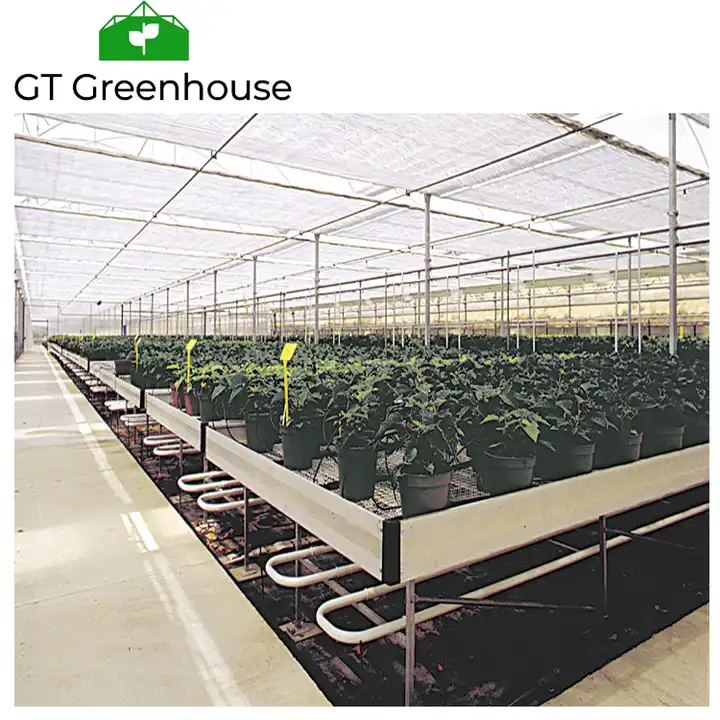Introduction
Greenhouse plastic film plays a vital role in modern agriculture by creating controlled environments that optimize plant growth and protect crops from external elements. The selection of appropriate materials for greenhouse plastic film is crucial, as it directly impacts factors such as light transmission, heat retention, durability, and cost-effectiveness. In this article, we will explore the materials commonly used in greenhouse plastic films and delve into the benefits they provide for successful crop cultivation in controlled environments.
Polyethylene (PE) Film
Polyethylene is the most widely used material for greenhouse plastic film due to its versatility, affordability, and ease of installation. It is a type of plastic produced from petroleum, and it comes in different grades and thicknesses to suit various agricultural needs. Polyethylene films offer the following benefits:
- Light Transmission:
Polyethylene films have excellent light transmission properties, allowing plants to receive the required amount of sunlight for photosynthesis. The films are designed to transmit the appropriate spectrum of light, optimizing plant growth and productivity. - Thermal Insulation:
Greenhouse polyethylene films provide effective thermal insulation, minimizing heat loss during colder periods and reducing the impact of temperature fluctuations. This insulation helps maintain a stable and favorable environment for plant growth, protecting crops from frost and extreme weather conditions. - Durability:
Polyethylene films used in greenhouses are engineered to withstand harsh environmental conditions, including UV radiation, wind, and physical impact. They are designed to be tear-resistant and durable, ensuring prolonged use and protection of crops. - Cost-Effectiveness:
Polyethylene films are a cost-effective option for greenhouse coverings, making them accessible to a wide range of growers. They offer an affordable solution for creating controlled environments without compromising on the essential properties needed for successful crop cultivation.
Ethylene-Vinyl Acetate (EVA) Film:
Ethylene-vinyl acetate (EVA) is a copolymer that can be used as an alternative material for greenhouse plastic film. EVA films offer specific advantages, particularly in more advanced greenhouse systems. Some benefits of EVA films include:
- Increased Light Diffusion:
EVA films have superior light diffusion properties compared to polyethylene films. The diffusion of light helps distribute it more evenly throughout the greenhouse, reducing shadowing and ensuring uniform plant growth. This is particularly beneficial for crops with light intensity requirements or those prone to sunburn. - Enhanced UV Protection:
EVA films provide increased UV protection compared to standard polyethylene films. This added protection helps shield plants from excessive UV radiation, reducing the risk of sun damage and crop loss. - Greater Tear Resistance:
EVA films exhibit improved tear resistance, making them less prone to damage during installation or due to environmental factors. This added strength contributes to the longevity of the greenhouse covering, reducing maintenance and replacement costs.
Benefits of Greenhouse Plastic Film:
- Extended Growing Seasons:
Greenhouse plastic films enable growers to extend their growing seasons by creating a controlled environment that protects crops from adverse weather conditions. The films trap heat, maintain optimal temperatures, and shield plants from wind, rain, and pests, allowing for year-round cultivation and increased crop yields. - Improved Crop Quality and Yield:
The use of greenhouse plastic film ensures a stable and favorable environment for plants, promoting healthy growth and improved crop quality. The controlled environment reduces the risk of diseases, pests, and other environmental stresses, resulting in higher yields and better-quality produce. - Reduced Water Usage:
Greenhouse plastic films help conserve water by reducing evaporation, particularly in arid or semi-arid regions. The films minimize water loss from the soil and plant surfaces, allowing growers to maintain optimal moisture levels with less irrigation. - Flexibility and Adaptability:
Greenhouse plastic films offer flexibility in terms of application. They can be easily installed on different greenhouse structures, including hoop houses, tunnels, or multi-bay greenhouses. The films can be customized to fit specific sizes and shapes, accommodating various cultivation needs. - Energy Efficiency:
Greenhouse plastic films contribute to energy efficiency by reducing the need for artificial lighting and heating. The films optimize natural light transmission and retain heat, minimizing energy consumption and associated costs.
Conclusion
Greenhouse plastic film, whether made from polyethylene or ethylene-vinyl acetate, provides essential benefits for successful crop cultivation in controlled environments. With their properties of light transmission, thermal insulation, durability, and cost-effectiveness, these films create optimal conditions for plant growth,greenhouse plastic film protect crops from external elements, and extend growing seasons. By harnessing the advantages of greenhouse plastic film, growers can enhance crop quality and yield, conserve resources, and cultivate success in modern agriculture.
